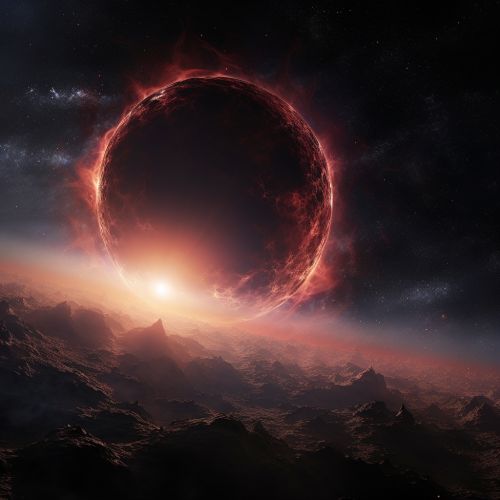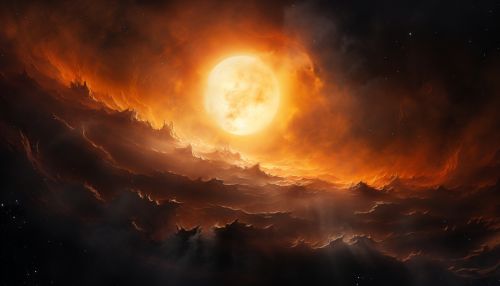Protoplanetary Disk
Introduction
A protoplanetary disk is a rotating circumstellar disk of dense gas and dust surrounding a young newly formed star, a T Tauri star, or Herbig Ae/Be star. The protoplanetary disk is an accretion disk that feeds the central star. Initially very hot, the disk later cools in what is known as the T Tauri star stage; here, formation of small dust grains made of rocks and ice is possible. The grains eventually may coalesce into planetesimals and planets.


Formation
The formation of a protoplanetary disk is initiated when a molecular cloud (a dense region of gas and dust in space) collapses under the influence of gravity. This collapse can be triggered by a variety of phenomena, including the shock waves from a supernova. As the cloud collapses, it begins to spin due to the conservation of angular momentum. The cloud flattens into a disk-like structure, with most of the mass concentrated in the center. This central mass will eventually become a star, while the surrounding disk of material is destined to become planets, moons, asteroids, and other small Solar System bodies.
Structure and Composition
Protoplanetary disks are structured in a series of concentric rings. The innermost region of the disk is typically characterized by high temperatures and low densities, while the outer regions are cooler and denser. The composition of a protoplanetary disk is primarily hydrogen and helium gas, with a smaller proportion of heavier elements. These heavier elements are primarily found in the form of dust grains, which can range in size from tiny micrometer-sized particles to larger, centimeter-sized pebbles.
Planet Formation
The process by which planets form within a protoplanetary disk is complex and still not fully understood. However, it is generally believed that planet formation begins with the coagulation of dust grains into larger and larger aggregates. These aggregates eventually become planetesimals, which are the building blocks of planets. Over time, these planetesimals collide and merge to form protoplanets.
Observations and Studies
Observations of protoplanetary disks have provided valuable insights into the process of star and planet formation. Astronomers use a variety of techniques to study these disks, including direct imaging, spectroscopy, and interferometry. These observations have revealed a wealth of detail about the structure, composition, and dynamics of protoplanetary disks.
